01 Dec 2021
When the COVID-19 outbreak reached Singapore’s shores, defence engineers stepped forth with their technical expertise and developed solutions to bolster our nation’s response to the unprecedented global pandemic.
Shortly after the virus was detected in early 2020, cases in the country began increasing rapidly. There was a need to make sense of the evolving situation quickly, and roll out effective measures to keep the spread under control. However, manual processes and a lack of common data sources across agencies made real-time coordination difficult. To add to the mix, the global disruption to supply chains threatened to affect food supplies. An accurate and common situational picture was needed to facilitate decision making and quick response.
To enable the multi-ministry task forces to collaborate and respond swiftly, a team of DSTA engineers and developers, together with the SAF, ST Engineering and NCS Pte Ltd, delivered a suite of command and control (C2) solutions which spanned across areas such as contact tracing, patient care, testing operations, and supply chain risk management.
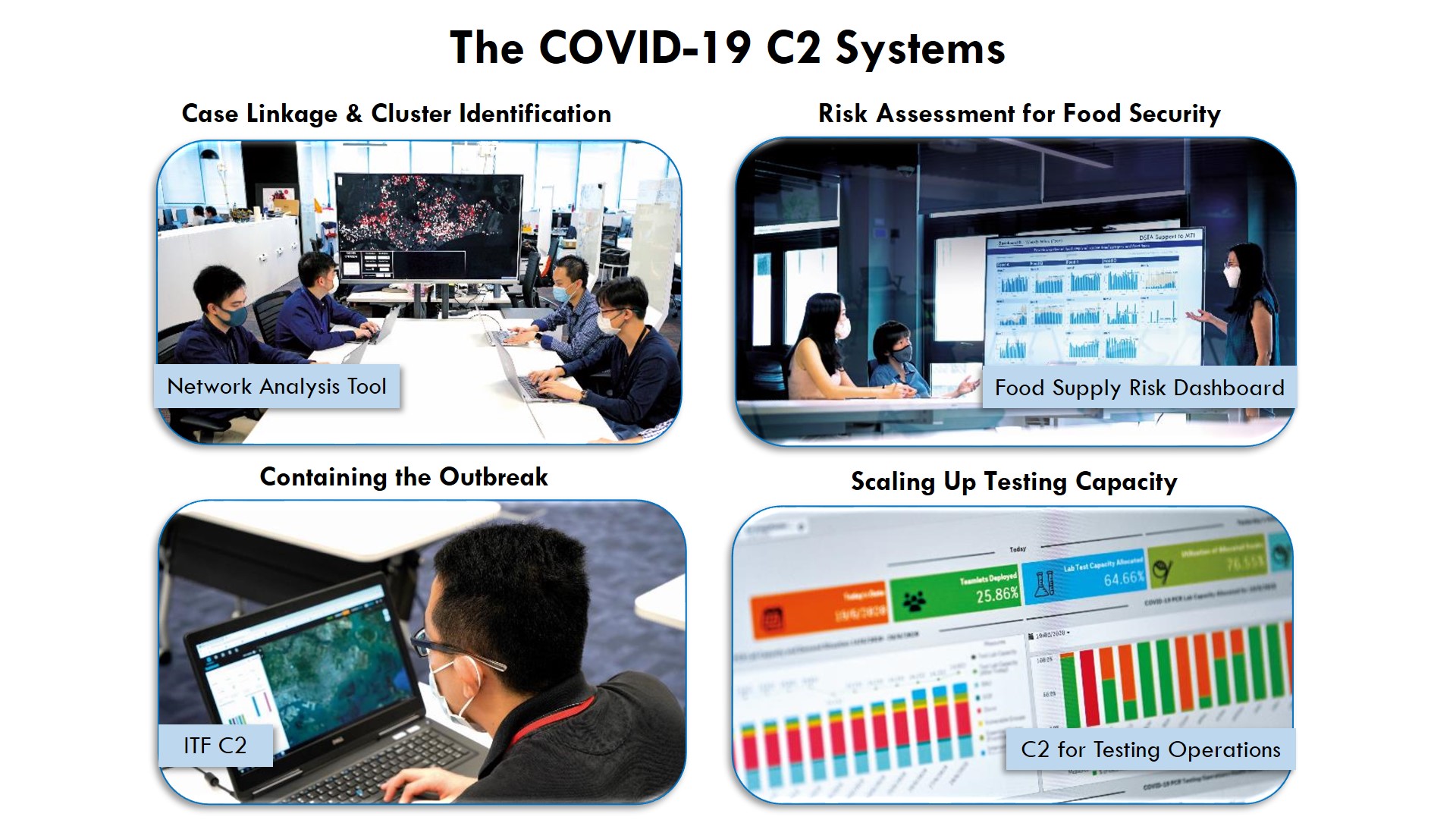
These solutions, which were developed and deployed in a matter of weeks, were instrumental in providing comprehensive situational awareness and facilitating the rapid scaling up of our nation’s testing capacity, the safe resumption of work, and the strengthening of our food supply chain resiliency. In recognition of its achievements and contributions, the team received the Defence Technology Prize (DTP) Team (Engineering Award) this year.
We caught up with some of the team members to find out more.
Tell us about your role in this project.
Senior Programme Manager PO (C3 Development) Sharon Ang: I led a team of engineers to develop a C2 system to support the Inter-agency Task Force (ITF) in managing the virus’ outbreak in the migrant worker dormitories. This was done by integrating and facilitating the access of data across the ministries.
Head Capability Development (Next Generation C3) Poh Chun Siong: I headed a team that delivered the network analysis tool, which helped contact tracers identify clusters and links among cases speedily.
Senior Engineer (Enterprise IT) Loo Jian-Ju: I was part of a team that delivered a C2 system to manage end-to-end COVID-19 testing operations at the national level.
Head Capability Development (Systems Resiliency) Cheng Siew Yen: My team and I developed a dashboard to provide situational awareness of our national food supply and demand, and uncovered potential risk areas and constraints to strengthen our food security.
What led to the idea of developing C2 systems?
Chun Siong: With new ground operations being set up across multiple agencies at the start of the pandemic, it was particularly challenging for the multi-ministry task forces to coordinate their efforts. Much of the necessary information was captured and exchanged manually, and keeping up the accuracy and currency of the data was also challenging due to a lack of common data sources. Having C2 systems would mean having a common situational awareness, facilitating decision-making, and helping to manage limited resources better.
Siew Yen: Furthermore, the unprecedented nature of the crisis led to a need for customised solutions that could be adjusted rapidly to meet our needs. We saw that our technical expertise and experiences could come in handy to help overcome these challenges, so we extended our support in multiple areas to deliver innovative solutions quickly.
How did the C2 systems strengthen the national effort against COVID-19?
Sharon: The ITF C2 system provided a timely and integrated situation picture by organising and sense-making huge amounts of data from over 10 Whole-of-Government and private sector systems. Think of it as a nerve centre for operations, which could receive and process information from different parts quickly to coordinate follow-up actions. With the system, the task force was able to keep track of migrant worker movement across medical and care facilities, better manage the planning and execution of conveyance and swab operations, as well as monitor the health and work status of workers to ensure a safe return to work.
Chun Siong: The network analysis tool digitalised the manual and memory-intensive process of contact tracing. It exploits network analytics – a data science technique – to map out a visual network representation of the cases and link them through activities, locations and time. Since its deployment, we have achieved faster, more accurate linking of cases, and identified significant clusters such as those at shopping malls, restaurants, shops and worksites.
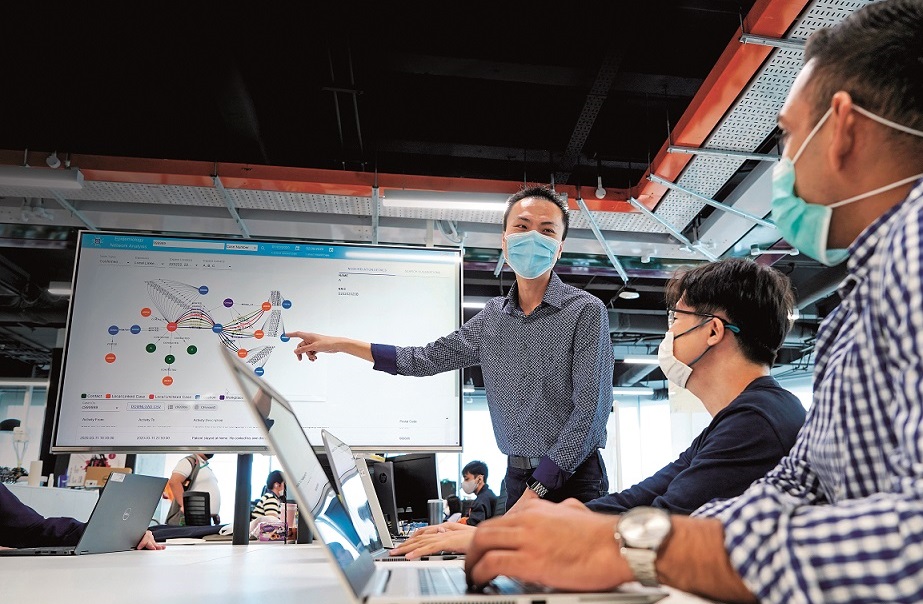
Chun Siong (standing) working on the network analysis tool with his teammates.
Jian-Ju: The C2 system that supported testing operations aggregated swab test demands, testing resources, swab operations and test results data, and recommended resource allocations via an optimisation engine. The system allowed the Ministry of Health to scale up testing operations, from a daily average of around 14,000 swabs per day to 200,000 at a steady state, and greatly shortened the turnaround time to receive swab results from two days to 12 hours.
Siew Yen: The food supply risk dashboard integrated data from multiple agencies and local supermarkets to build a common situation picture of the national food supply and demand. It included risk simulation models to project impact to the national stockpile under various consumption and supply disruption scenarios, enabling the government to review national stockpile targets and quickly formulate stockpiling strategies.
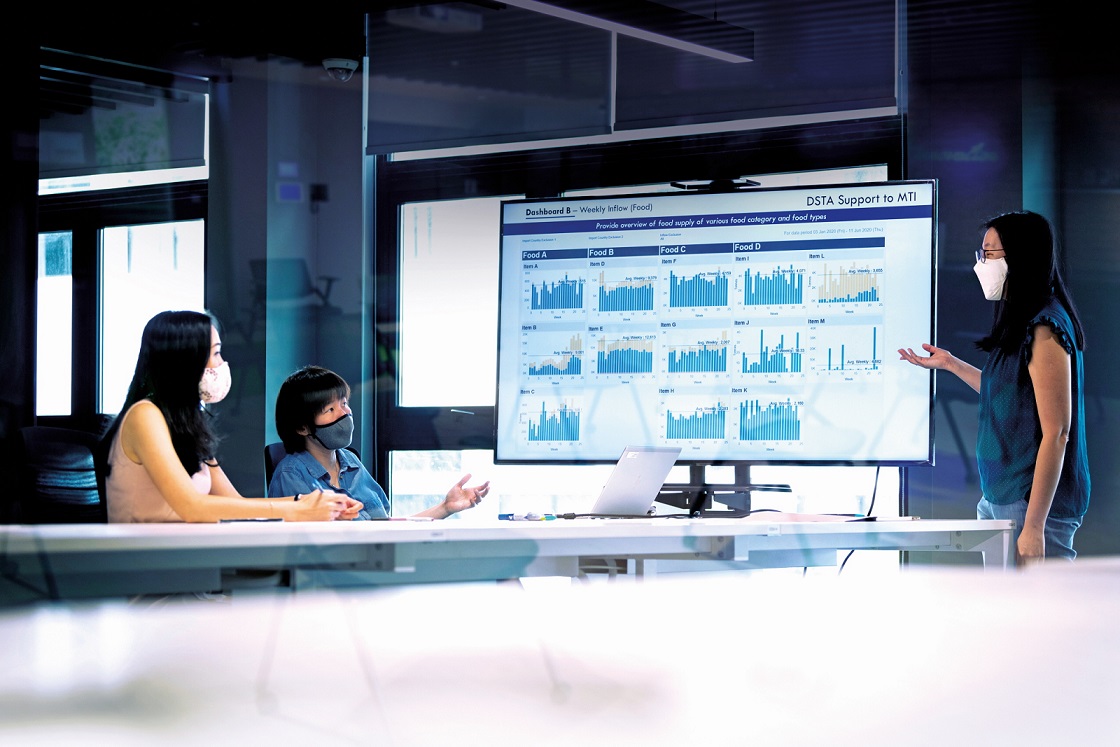
Siew Yen (standing) working on the food supply risk dashboard with her teammates.
How did your teams get the systems up and running in such a short time?
Sharon: The systems were deployed and iterated upon within weeks to match the pace of the evolving operations. Many teams were formed from the start to work on different systems, and our staff members were attached to various ministries to suss out their exact needs. They would observe the situation on the ground firsthand, and relay the requirements to the development team. This gave the teams a good idea of the processes and issues involved, and allowed us to bounce off and validate ideas with the users quickly.
Jian-Ju: We also adopted an agile development approach, where we rolled out a minimum viable product first and made enhancements and adjustments in iterations. This allowed us to improve and fine-tune the system continuously. As timelines were compressed due to the urgency of the COVID-19 situation, each iteration took just a few days to a couple of weeks, as compared to the traditional development approach that could take up to months.
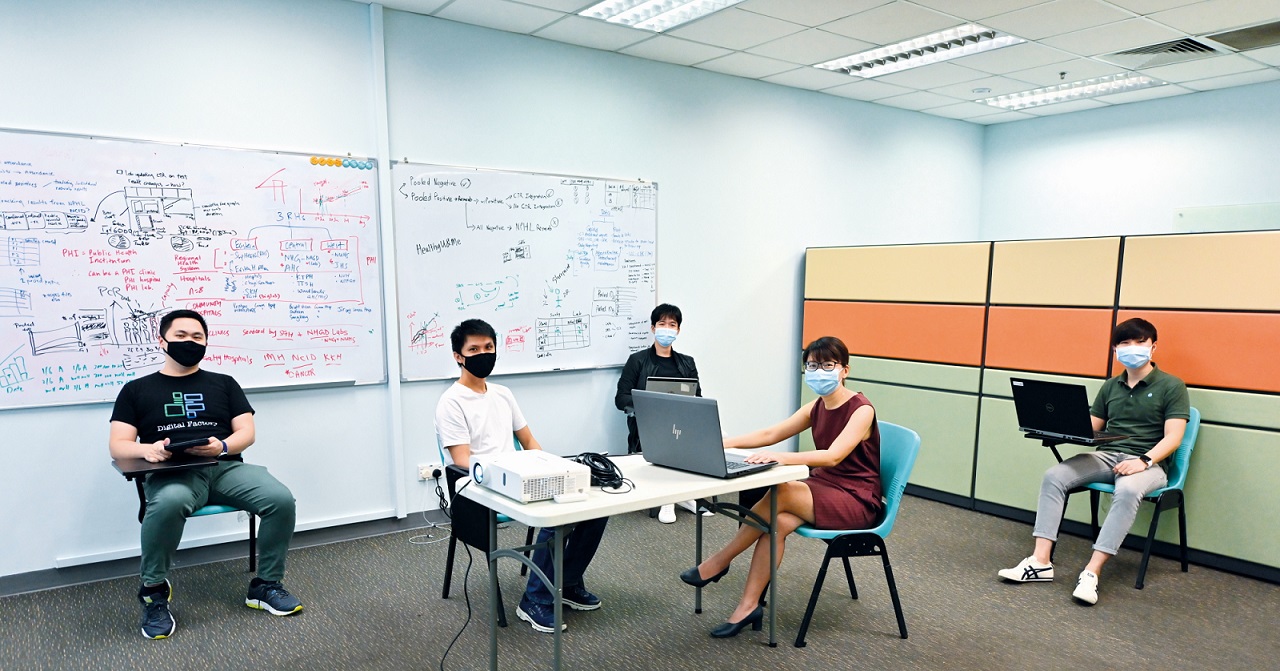
Jian-Ju (first on left) with his teammates.
What was the biggest challenge?
Sharon: The entire operation was a large and complex undertaking. We had to integrate the different operational workflows and data while ensuring that the various agencies could still carry out their roles effectively. Besides having engineers on the ground to gather deeper insights, we also relied heavily on the strong ops-tech partnership between DSTA and other agencies to develop quick and effective technological solutions. Our team took to the role quickly to develop solutions that could best support the task forces’ operations.
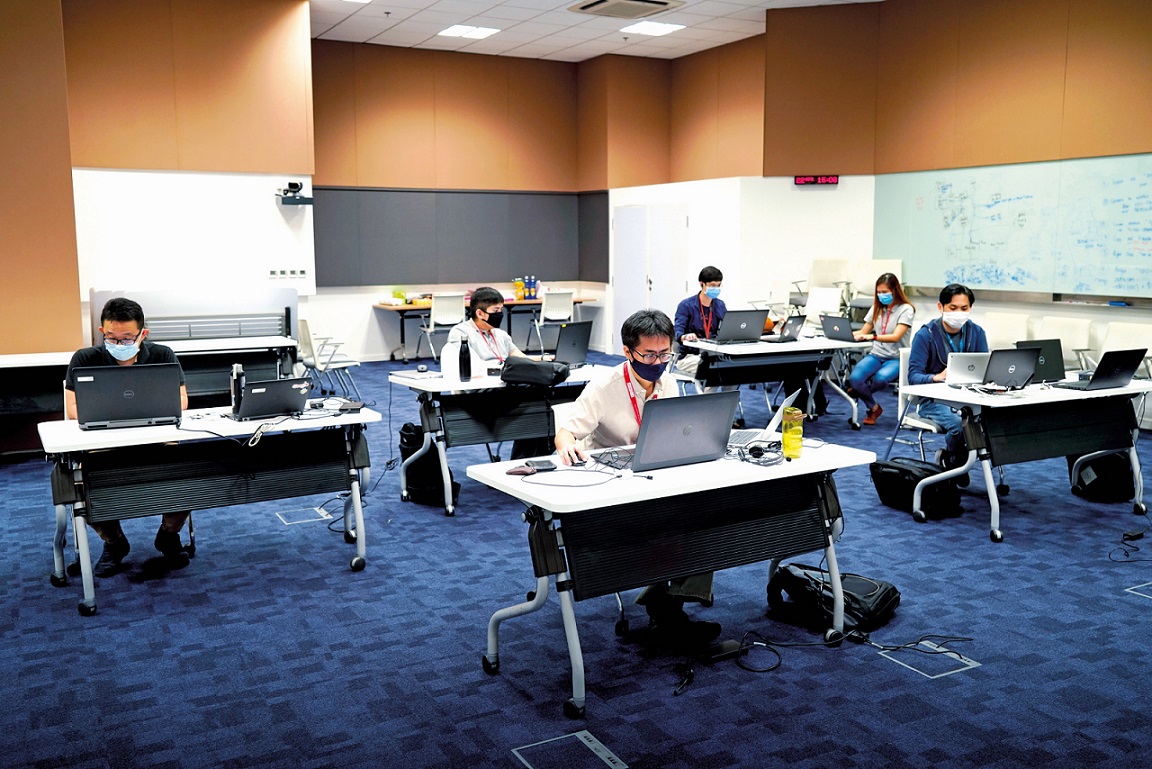
Sharon (second from right) and her teammates working on the C2 system.
Any takeaways from your experience?
Chun Siong: To design and deliver systems that enhance operational effectiveness and user experience, it is important for the operations and technical teams to be aligned in their goals, work together closely and understand one another’s challenges. In addition, agile development is key, as it allowed us to iterate the solution together with the users, and ensure that the system could continue to deliver in a fast-evolving situation. We also learnt to be bold in taking risks, by adopting a fail-fast approach to evaluate ideas and identify promising ones quickly for further works.
How do you feel about winning the DTP?
Siew Yen: We are very honoured to have received the award. It is a recognition of the hard work and effort our team has put in to deliver the capabilities. More importantly, we are proud to have been able to contribute and make a difference to the fight against COVID-19. We would like to express our heartfelt thanks to our partners involved, and we hope to continue doing our part and lending our technical expertise to support national initiatives.
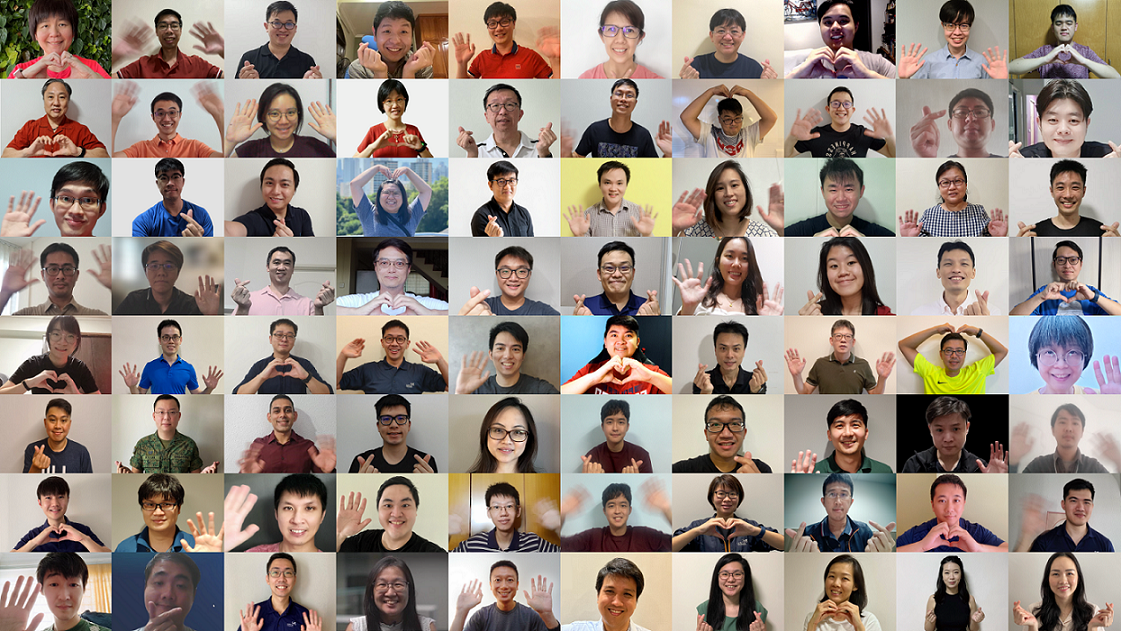
The COVID-19 C2 Systems team.
